Recognizing the different forms of content can help you tailor your writing strategy to meet your goals.
From blog posts to social media updates, each type is meant for a specific purpose and requires a unique approach.
In this guide, you’ll discover the key types of content writing and how you can leverage them to connect with your readers more effectively.
Disclaimer: If you buy any products through links on this site, I may earn a commission. But it doesn't make any difference to your cost, and it helps me keep this blog running. So you could always read my articles for free.
Types of content writing
There are a number of different content writing types, based on their objective, format, and mode of communication. As a result, there are different forms of content writing.
As such, a website content writer could be a generalist, good at adapting to varying content writing types. Or he could choose to specialize and establish expertise in only one form.
Blog posts
A blog post is by far the most common type of content writing. And for good reason. Consistent blogging is an effective and low-cost way to grow a brand.
For the uninitiated, a blog is a section of a brand’s website where they publish articles on topics that their target audience would be interested in. Each such article is known as a blog post.
In other words, a blog is a collection of blog posts, usually listed in chronological order. The latest posts show up near the top, followed by older posts at the bottom.
For example, this article that you’re reading right now is one of the many blog posts published on this blog. For step-by-step instructions on how to write an epic blog post, check out my ultimate guide here.
Website copywriting
Of all the content writing types, this one comprises most of the material written for all the standard pages of a website.

Potential customers have certain expectations of the information they expect to find on your website. So there are some standard pages you must have.
These include the homepage, about us page, products and services pages, and contact information page, along with terms, policies, and frequently asked questions.
The purpose of this type of content writing is to provide all the information a prospect may want to know about the business, its products/services, how they benefit the prospect, and its mission, vision, and values.
Social media posts
Social media is a big part of our lives. It’s also a big way for businesses and customers to connect and interact with one another.
By posting interesting content regularly on social media, you can influence and build a relationship with your target audience.
From Facebook to LinkedIn, there are a number of different social media platforms, with their own formatting and visual specifications.
That’s why the ability to write engaging social media posts for each type of platform is in high demand.
Writing for social media involves scribbling short paragraphs, blurbs, or rants (along with attention-grabbing visuals).
Their purpose could be to show a brand’s authentic side, promote an event, share inspiring ideas, or extend an offer.
Advertising/sales copywriting
Copywriting is one of the most sought-after content writing types. It is intended to make people interested in a brand’s product or service. And to make them act towards a specific offer. Here’s an example of copywriting in Google Ads:
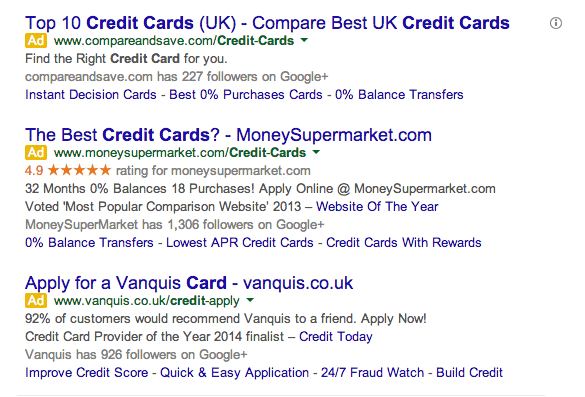
Sales copywriting is more of a science, focused on understanding what’s going on in your customer’s heads and addressing their pain points. And it aims to steer people toward a certain action. This action could be:
- Clicking on an advertisement and visiting the brand’s website to learn more.
- Subscribing to a brand’s email newsletter.
- Enquiring about a service by filling in a contact form.
- Adding a product to the shopping cart and completing the checkout process.
The kind of marketing copy to be written for the web is also determined by the platform where it will be published or distributed.
These include email newsletters, social media advertising, landing pages, product descriptions, and paid search campaigns.
Technical writing
In some industries, it’s impossible to produce good content if the writer doesn’t have formal education or experience in the field.
In fact, there could be serious consequences if the content is misleading or inaccurate. These include niches like:
- Finance and banking
- Healthcare and medicine
- Legal rules and regulations
- Deep technology and science
Because of the complexity and risks involved, only content writers specialized in an area can write content associated with it.
According to the U.S. Department of Labour Statistics, demand for technical writers is estimated to grow at a 12% faster rate between 2020 and 2030 as compared to other writers.
Not just that. Technical writers are also paid more than generalist website content writers.
Even for businesses, technical writing is an essential type of content writing because it helps customers understand, use, and make the most of their products and services.
User manuals/documentation
The Zendesk Customer Experience Trends Report suggests that 69% of customers want to resolve as many issues as possible on their own. And by empowering your customers to do the same, you are more likely to delight them.
The more features and complexity a product or service has, the deeper the need for thorough documentation.
When you buy toothpaste, for instance, you don’t need a user manual to use it. But when buying something more sophisticated, like business software, just a quick-start manual may not be enough.
You may need detailed tutorials on using all the features. So, in this area, website content writers deal with documenting product features, updates, use cases, guides, and tutorials. Canva’s help center is a good example.
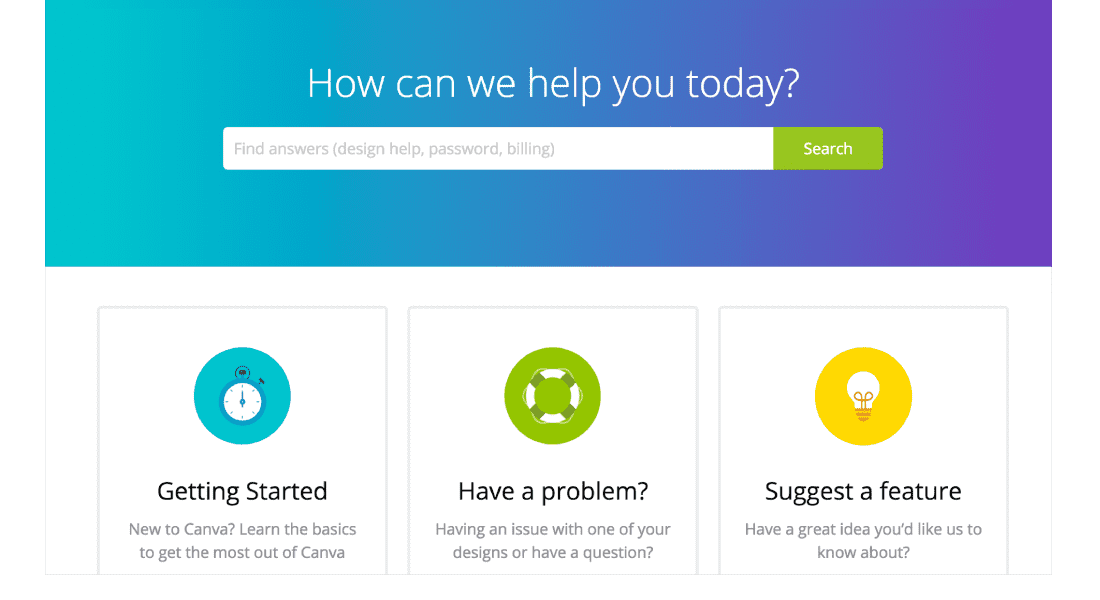
In a way, this is similar to technical writing, as a website content writer will need proper knowledge of the product and industry it operates in. Only then will he or she be able to write useful content.
Ebooks & white papers
In terms of content writing types, PDF reports or books are usually given a visual, in-depth treatment. They are more editorial than promotional in nature.
Each PDF guide or report covers a specific subject area or solution to a problem. When you help your audience with this problem, you establish your thought leadership and expertise.
For example, an office concierge company might write an ebook on the best ways to motivate your employees, one of which could be planning a team event or activity.
Writing such types of content would require not just a good writer, but also a designer. The writer should be able to produce top-notch content, while the designer will ensure the content is presented in a visually appealing manner.
Ebooks or reports also make for great lead magnets. In other words, they can be used to incentivize your website visitors to submit their email addresses.
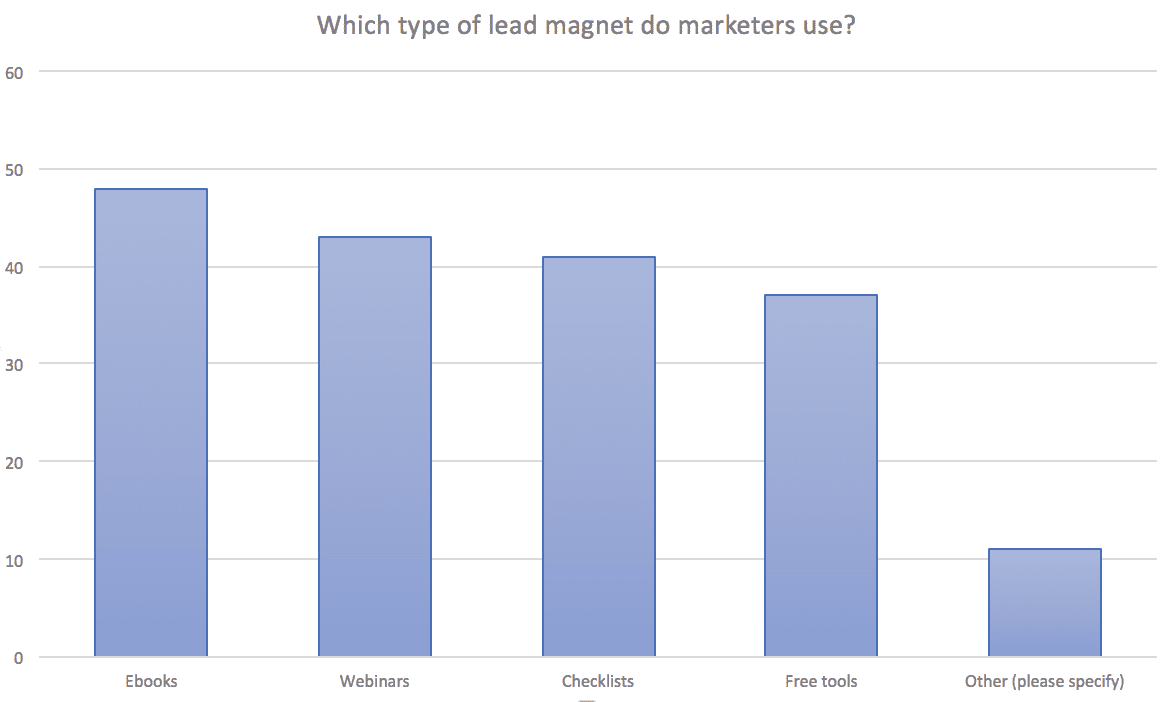
So they get access to download your ebook only after they have opted in. This way, you get to keep in touch with them and engage them further with your brand.
UX writing
UX is another fast-growing field for tech brands and website content writers. It consists of the various text elements (buttons, labels, etc) that help users understand and follow through the steps to complete a process.
For example, the steps a user would take to open a bank account via the bank’s website, or to complete a purchase online.
In this type of content writing, the UX writers typically get involved early in the design stage when a software or web application is being planned.
They make sure that UX copy is so efficient and intuitive that it doesn’t make the user think twice or get stuck on a step.
Case studies
This is one of the classic content writing types for bottom-funnel content. In fact, 78% of B2B buyers use case studies when researching solutions.
Case studies show your prospects the results other buyers have achieved as a result of using your product or service. So the prospects can envision similar success for themselves.
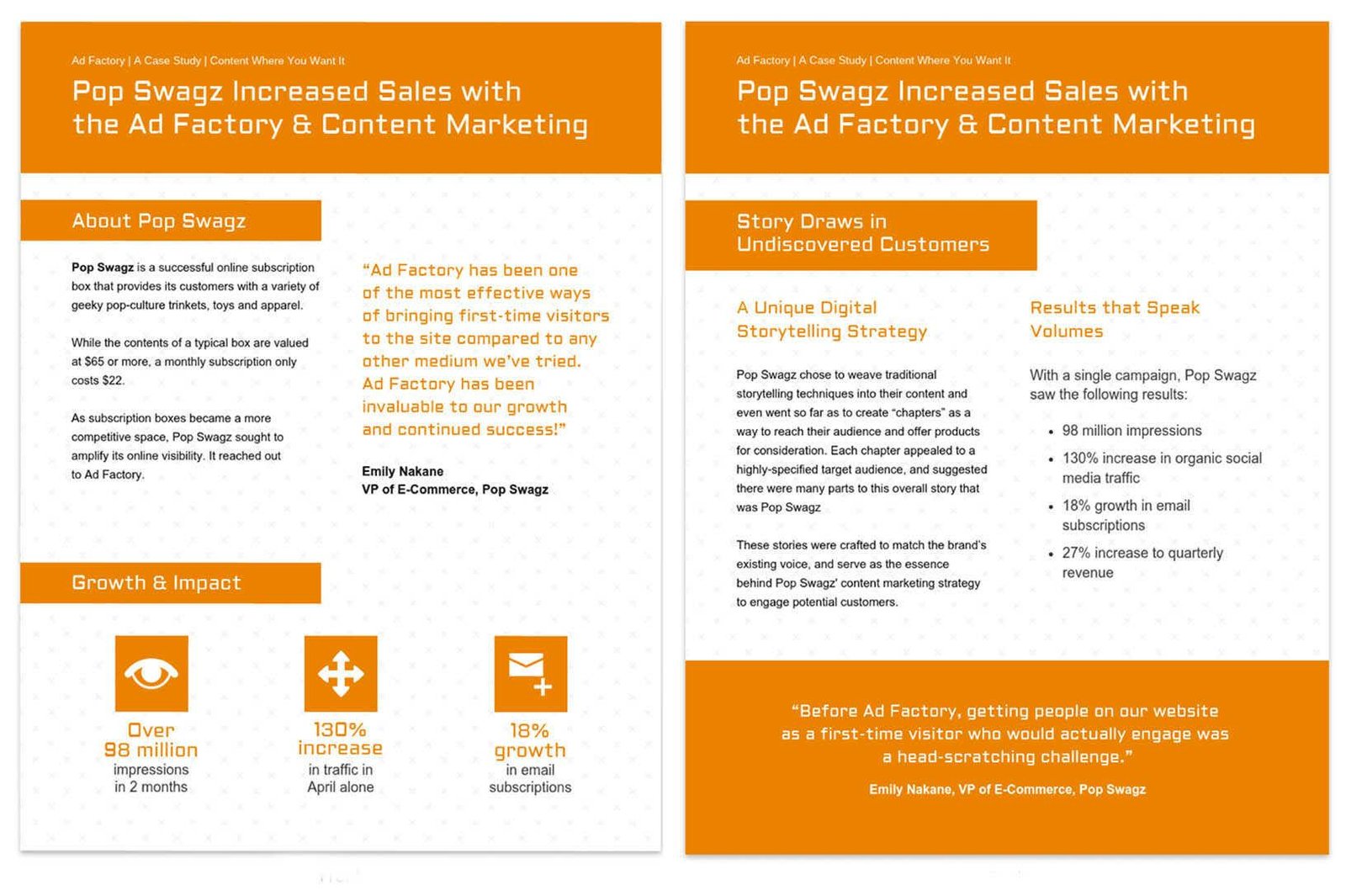
Writing a case study involves reaching out to your happy customers and requesting them to collaborate on creating a story around their success. A good case study clearly outlines:
- The core problem that your client/customer was facing before they bought your product or service.
- What service approach or product features helped them solve the problem and how (without giving away any confidential information)?
- The concrete results achieved (with real numbers/data if possible) by the end of the duration associated with the case study.
- A short summary/blurb that you or your sales team can easily share in customer calls or emails.
Once you have some case studies prepared, the most common way to distribute them is by creating a portfolio/case studies page on your website.
Comparison with competitors
Let’s face it: Yours is not the only product/business a prospect is considering. It’s never been easier to find information on any type of product or service your prospects may be interested in.
They’re probably weighing their options. They’re wondering what makes your product different from the alternatives in order to make an informed decision.
Don’t put your head in the sand about this. Acknowledge and embrace it. Address this objection head-on. By providing an unbiased review of the differences between you and a competitor, you can earn the trust of potential customers.
Create content that gives a comprehensive feature-by-feature comparison, depending on the complexity of your offering.
For example, here’s how ClickUp compares itself with Monday, and how Clearbit created content addressing how it differs from Data.com.
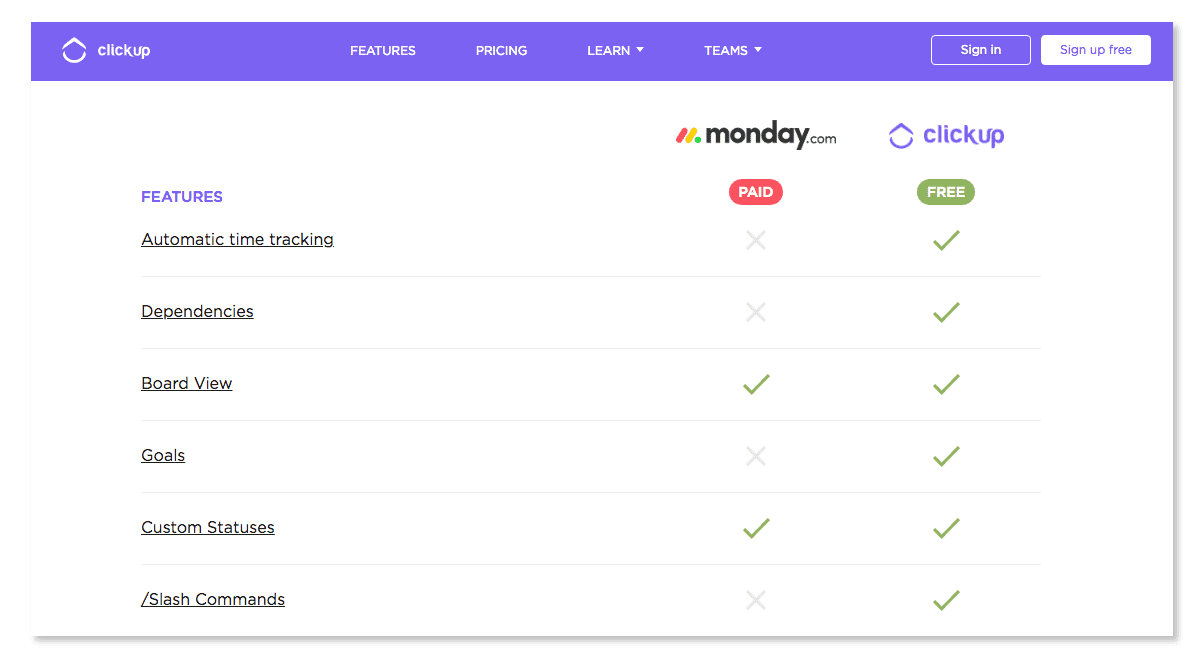
Reviews/testimonials from past customers
According to a study, 97% of US consumers check online reviews before making a purchase.
So, customer reviews, testimonials, and recommendations are also an important part of your sales and marketing strategy. Though, this type of content writing is not always 100% in your control.
Having a stellar reputation is a significant advantage. Hearing honest feedback from current clients is often the main source of trustworthy information for potential clients.
It gives them a preview of what it would be like to become your customer. Needless to say, you should have a system in place to collect and showcase testimonials from customers on your website.
So, how do you go about getting positive testimonials? If you have ensured the best experience for your customers, many times, all it takes is just asking them.
It’s also important to solidify your ask by offering incentives and making the process as easy to follow as possible. Don’t make them jump through any hoops or technical mumbo jumbo just to leave feedback.
You can contact them with questions by email/phone, or send them to a third party review site like G2, Capterra, or Glassdoor.
Timing is another important factor for this type of web content. You should ask for a review or testimonial when the memory of your product or service is still fresh in their minds. Not after the fact.
The reviews you generate are not just great to showcase on your website, but can also be used in other collateral like case studies, presentations, and infographics.
Final thoughts on content writing types
The landscape of content writing is diverse and ever-evolving. By familiarizing yourself with the various types of content, you can refine your writing style and better engage your audience.
Whether your goal is to inform, entertain, or persuade, understanding these different formats will empower you to deliver compelling messages that resonate with readers.
Embrace the versatility of content writing, and start applying these insights to elevate your writing.
Did I miss anything? Did you try these types? Do you have any questions or comments? Share your thoughts below in the comments section.





It’s really informative. It’ll be a great help for my content creation.
Hi Hitesh,
This article is very much useful for me. I think optimizing web content for search engines is crucial for improving visibility and attracting organic traffic. This involves using relevant keywords, creating unique and valuable content, and optimizing meta tags, headings, and URLs to enhance search